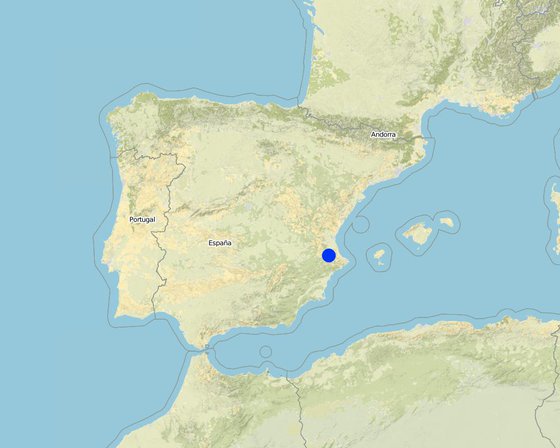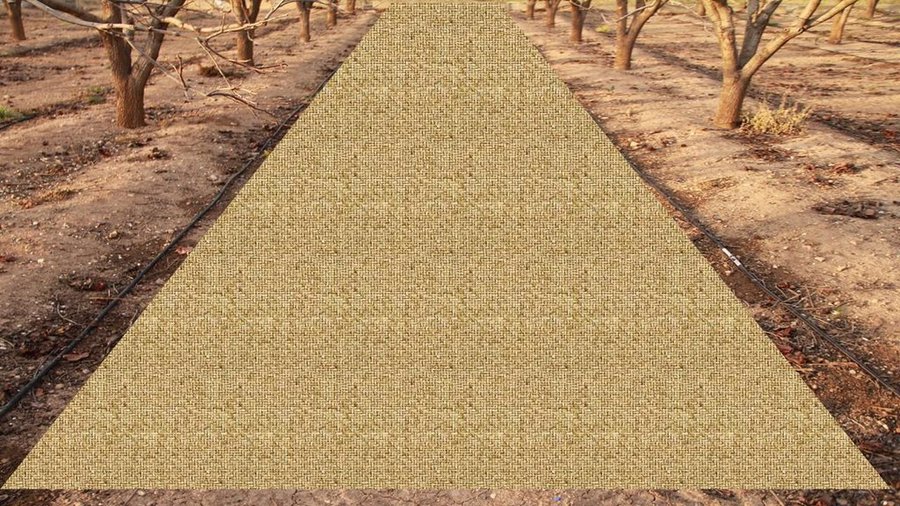

In a Persimmon crop area near Valencia (south-east Spain), the research team of the University of Valencia set up an experiment in order to test the effect of the catch crop technique to avoid soil water erosion and improve soil properties.
Purpose of the Technology: The increase in ground cover will decrease soil erosion by reducing raindrop impact on the bare soil. Amount of runoff also decrease by increasing water surface storage, decrease of runoff velocity, and increase of infiltration. Its application must be done after cropping and before high-storm events in the Mediterranean; namely end summer to early autumn, in order to protect raindrop impact and detachment of bare soil.
Establishment / maintenance activities and inputs: Catch crops will be obtained after harvesting.
Natural / human environment: The persimmon production in the area has been implemented in recent time due to the market prices. There has been a quick land use change from citrus orchards to persimmon orchards.
The landscape reflects the long history of management where several constructions related with wine production depicted its importance on this region. Since the late 1960´s, chemical agriculture by use of fertilizers and herbicides, and new orchards plantations as Persimmon, led seasonally the soil surface bare, triggering huge erosion rates.

Localização: Valencia, Spain, Espanha
Nº de sites de tecnologia analisados:
Difusão da tecnologia:
Data da implementação:
Tipo de introdução





Especificações técnicas
Autor: Artemio Cerdà, University of Valencia. Dept. of Geography
Catch crop cover must be spread homogeneously in bare soil areas between trees lines in order to keep as much as possible the soil covered.
Location: Valencia. Spain Date: 13-03-2015 Main technical functions: control of raindrop splash, control of dispersed runoff: retain / trap, improvement of ground cover, increase of surface roughness, improvement of topsoil structure (compaction), increase in organic matter, increase of infiltration, sediment retention / trapping, sediment harvesting Secondary technical functions: control of dispersed runoff: impede / retard, control of concentrated runoff: retain / trap, control of concentrated runoff: impede / retard, control of concentrated runoff: drain / divert, reduction of slope angle, reduction of slope length, improvement of surface structure (crusting, sealing), improvement of subsoil structure (hardpan), stabilisation of soil (eg by tree roots against land slides), increase in nutrient availability (supply, recycling,…), increase / maintain water stored in soil, increase of groundwater level / recharge of groundwater, water harvesting / increase water supply, water spreading, improvement of water quality, buffering / filtering water, reduction in wind speed, increase of biomass (quantity), promotion of vegetation species and varieties (quality, eg palatable fodder), control of fires, reduction of dry material (fuel for wildfires), spatial arrangement and diversification of land use Better crop cover Material/ species: Catch crop Cover cropping Material/ species: Catch crop Mulching Material/ species: Catch crop Manure / compost / residues Material/ species: Catch crop residues lying on soil surface Change of land use practices / intensity level: Land use practices changes in order to implement soil cover on bare soil through catch crops |
|||||||||||